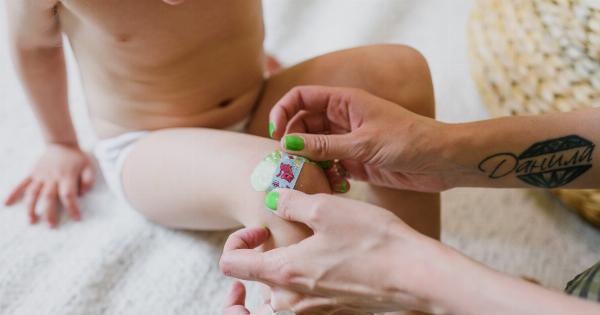It’s not uncommon to get bumps or knocks to the head, especially if you’re an active person or have young children.
Even minor bumps can cause pain, swelling, and tenderness, but thankfully most bumps on the head aren’t serious and can be treated with simple first aid techniques. In this article, we’ll discuss how to recognize the signs of a bump on the head, the steps you should take for first aid, and when to seek medical attention.
Recognizing the Signs of a Bump on the Head
The first step in dealing with a bump on the head is to recognize the signs. Some bumps are immediately obvious, while others may take some time to show symptoms. Signs of a bump on the head include:.
- A visible bump or swelling on the head
- Tenderness or pain when the area is touched
- A headache
- Dizziness or lightheadedness
- Nausea or vomiting
- Blurred vision
- Difficulty focusing
- Confusion or disorientation
If you or someone you know has experienced a bump on the head and is showing any of these signs, it’s important to take action immediately to reduce the risk of further injury.
First Aid for a Bump on the Head
If someone has sustained a bump on the head, the first thing to do is to assess the injury and provide appropriate first aid. The following steps can help:.
Step 1: Keep the Injured Person Calm and Comfortable
The person should sit or lie down in a calm, comfortable position. Encourage them to relax and take deep breaths. Talking to them in a reassuring voice can help to keep them calm and prevent panic.
Step 2: Check for Serious Injuries
Examine the person carefully for signs of serious injury. If the person has any of the following symptoms, call for emergency medical help immediately:.
- Unconsciousness
- Seizures
- Severe bleeding
- Vomiting repeatedly
- Difficulty breathing or shallow breathing
- Clear fluid draining from the nose or ears
- Signs of a broken skull (deformity of the skull or face, black and blue discoloration around the eyes, or blood leaking from the nose or ears)
Step 3: Apply a Cold Compress
If there are no signs of serious injury, apply a cold compress to the area to reduce pain and swelling. You can use a bag of ice, a frozen gel pack, or even a bag of frozen peas wrapped in a towel.
Apply the cold compress to the area for 15 to 20 minutes at a time, several times a day, for the first 48 to 72 hours after the injury.
Step 4: Administer Pain Relievers if Necessary
If the person is in pain, consider giving them an over-the-counter pain reliever such as acetaminophen or ibuprofen. Follow the instructions on the label for the correct dosage and do not give aspirin to children under 18 years old.
Step 5: Rest and Monitor the Person
Encourage the person to rest and avoid any activities that could make the injury worse. Keep an eye on them to ensure that they don’t show any signs of worsening symptoms.
When to Seek Medical Attention
Most bumps on the head can be treated with simple first aid techniques and don’t require medical attention. However, if the person shows any of the following signs, seek medical attention immediately:.
- Unconsciousness
- Severe headache, especially if it gets worse over time
- Repeated vomiting
- Uneven pupils or blurry vision
- Difficulty speaking or slurred speech
- Seizures
- Memory loss or confusion
It’s also important to seek medical attention if the person has sustained a head injury and is taking blood thinners, has had a recent surgery, or has a history of bleeding disorders.
In these cases, the risk of bleeding in the brain is higher, even if the initial injury seems minor.
Conclusion
Bumps on the head can be painful and scary, but the good news is that most are not serious and can be treated with simple first aid techniques.
If you or someone you know has sustained a bump on the head, be sure to take appropriate steps to assess the injury, provide first aid, and seek medical attention if necessary. With the right approach, you can help ensure a safe and speedy recovery.






























